IV. Imagination, Dreams and an Alchemical Lens
Rosalind Whitman
-
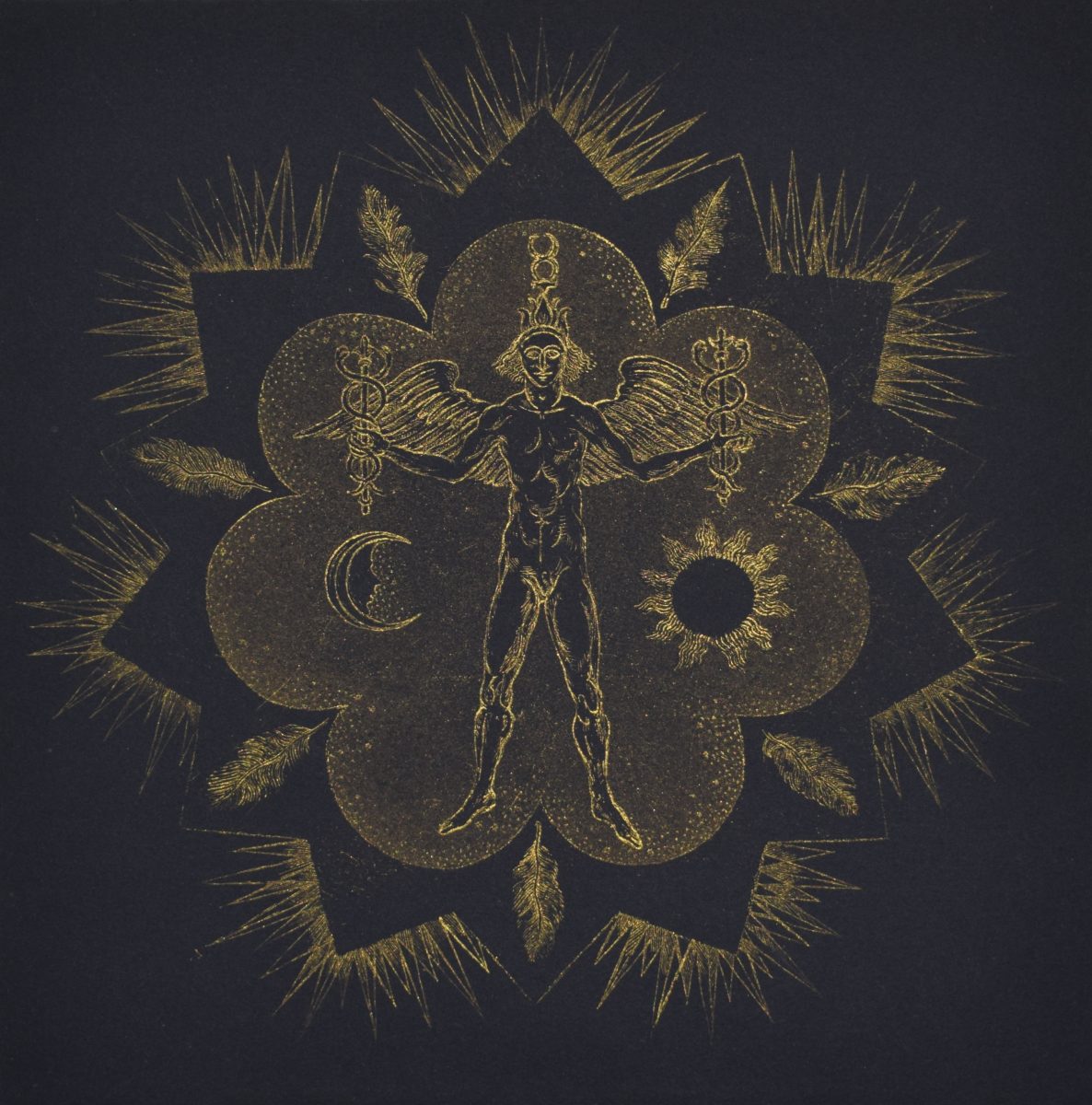
The Messenger Mercurius, etching
-
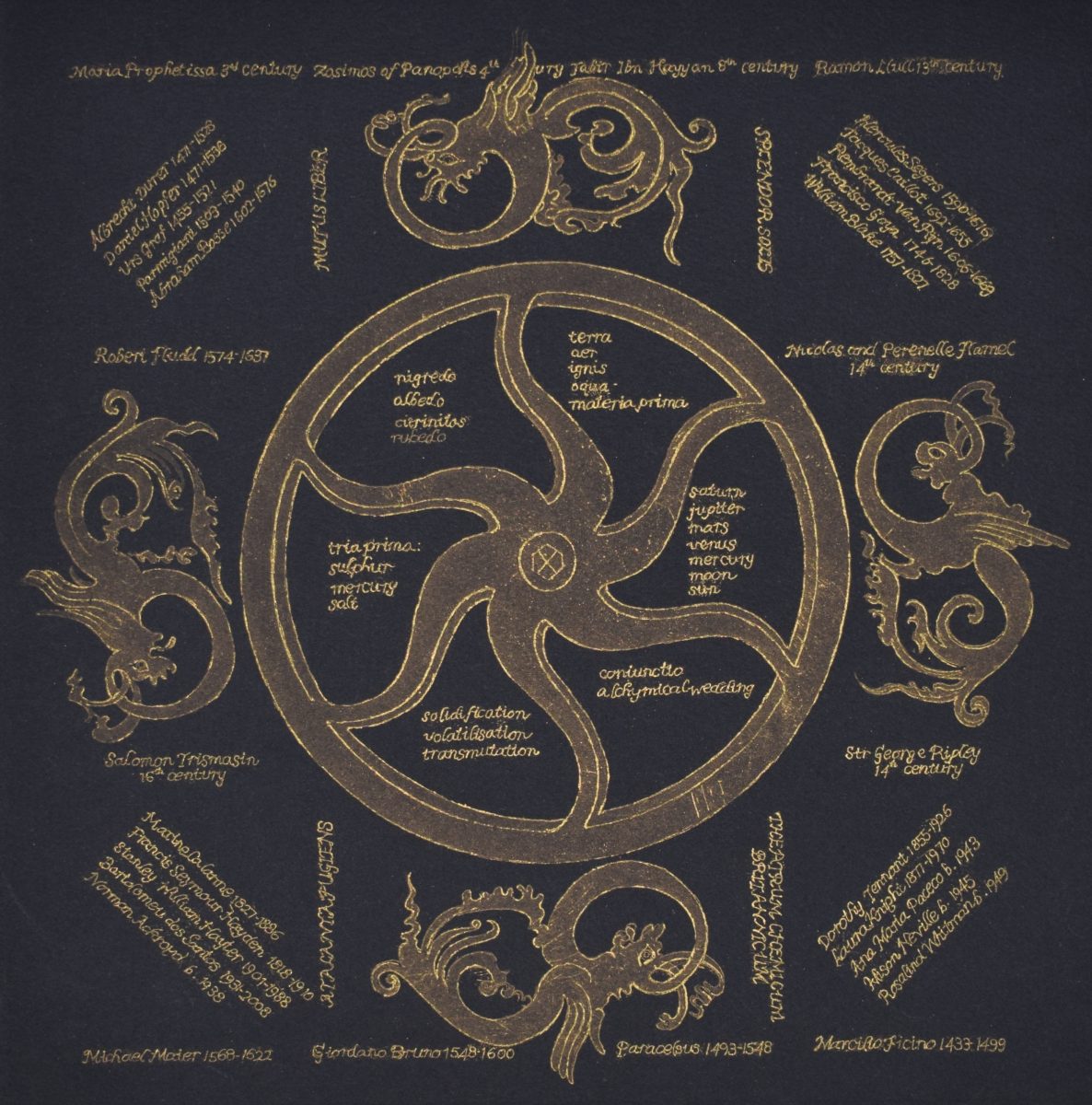
Essential Texts for Alchemists and Etchers, etching
-
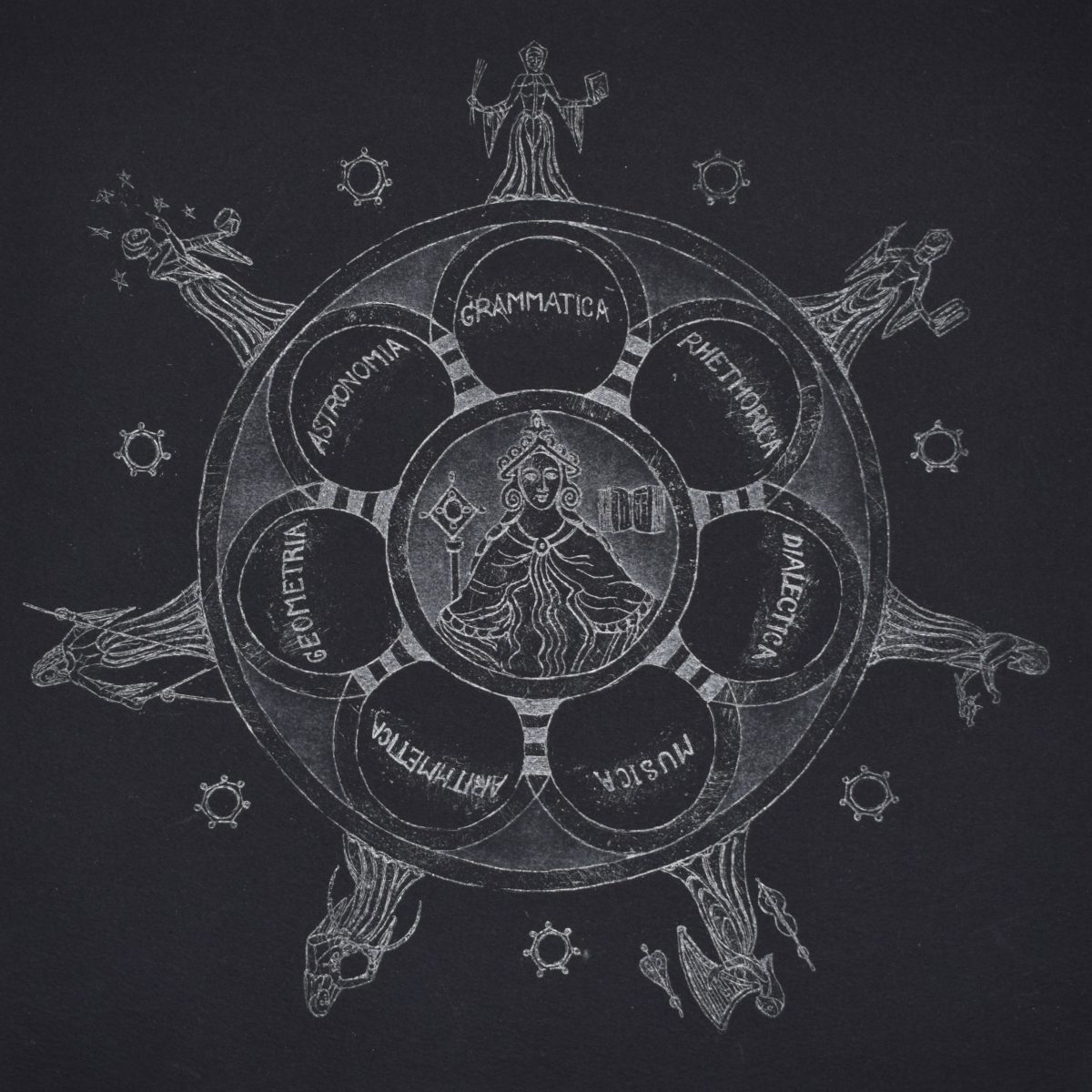
Seven Liberal Arts, etching
-
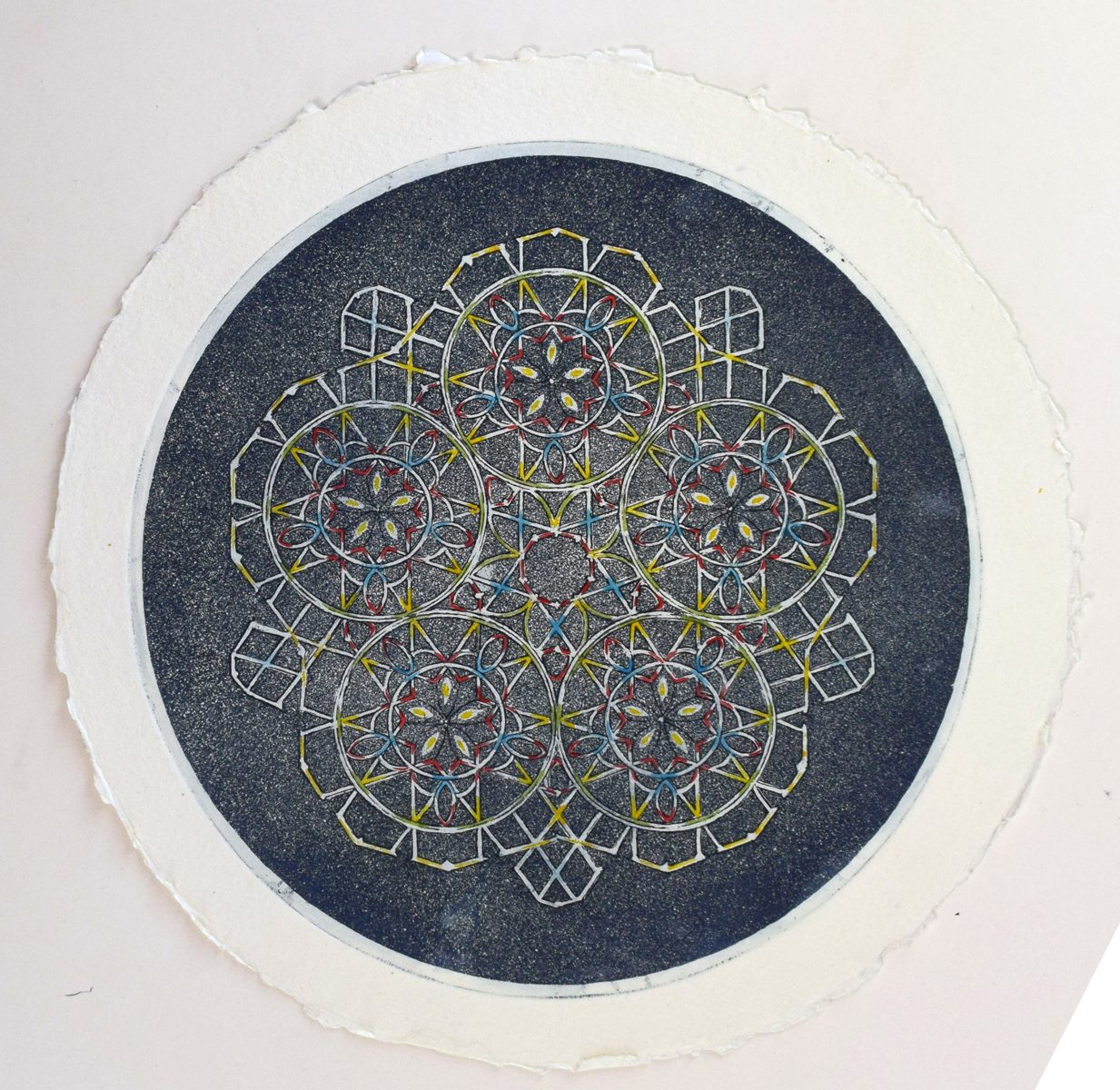
Fivefold Aqua, hand coloured etching
-
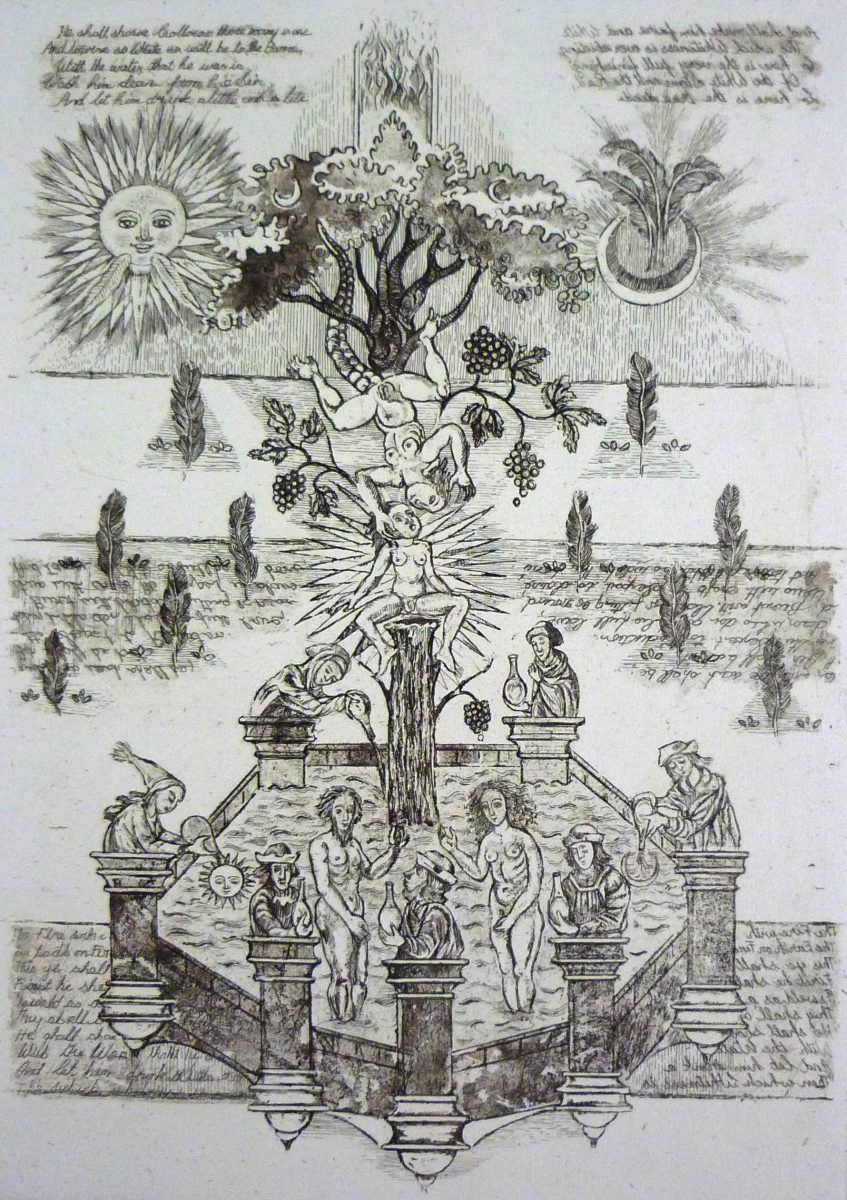
Transformations of Mercurius, etching
-
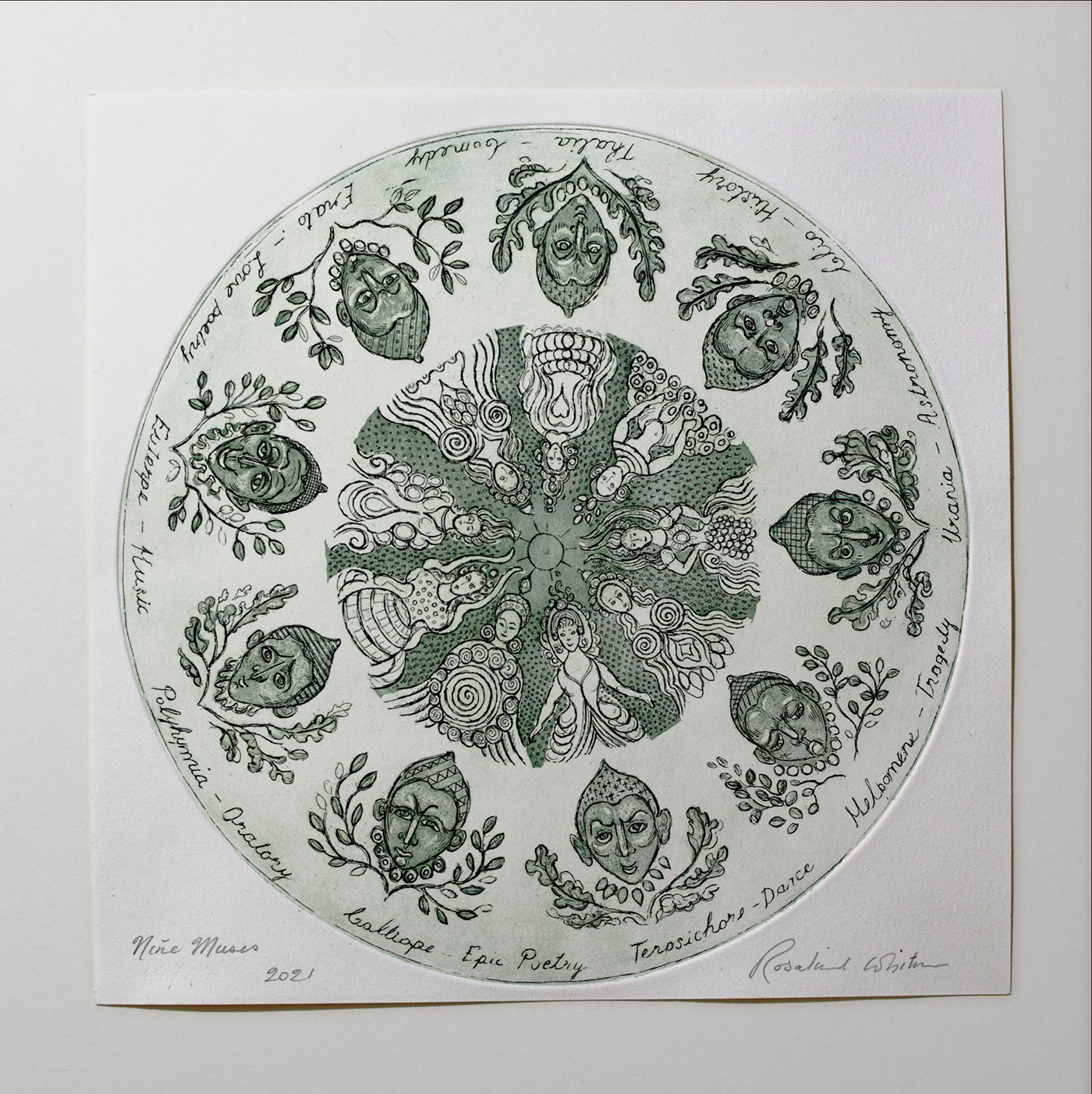
Nine Muses Etching
-
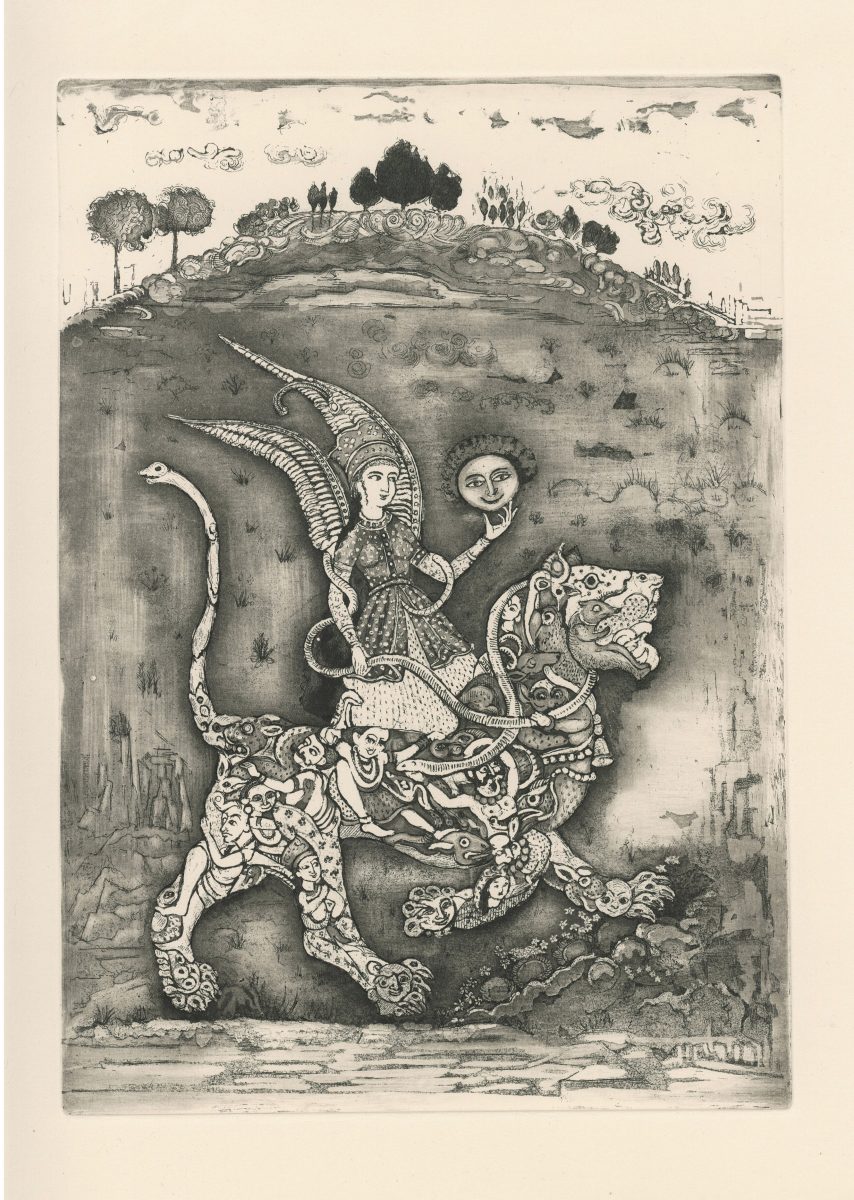
Peri Rides the Cosmic Lion, etching
-
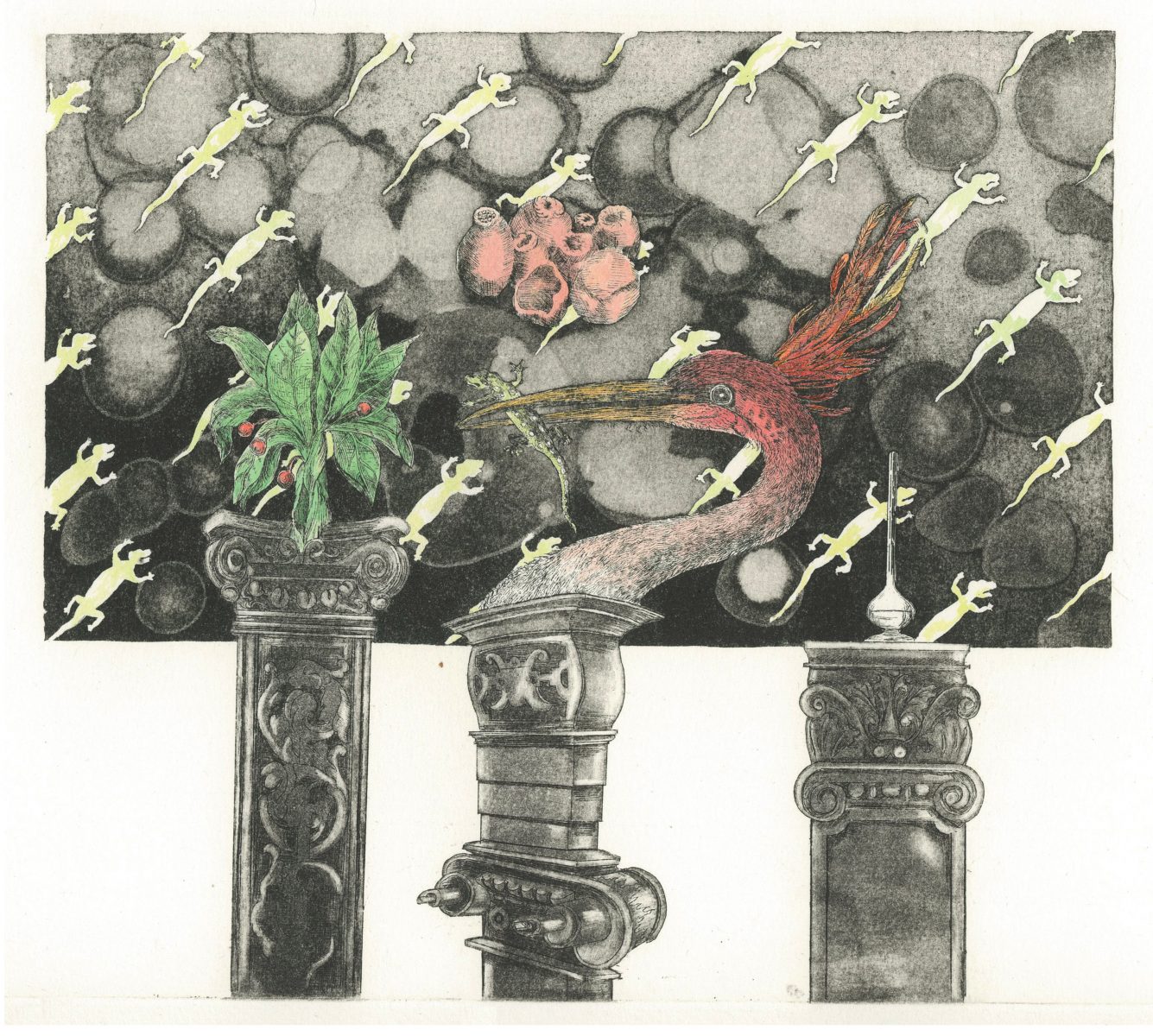
Lizards, hand coloured etching
Artists, I suppose, understand alchemy best—the long struggle with intransigent materials, the fusing of subject and object in the fire of imagination, the synchronous mirroring of inner and outer worlds.
Patrick Harpur (2009)
I have adopted an alchemical “lens” as a way of framing aspects of my practice, sourcing material from alchemical images and using the alchemical language to speak about it to draw attention to the parallels which exist between alchemists’ and artists’ involvement with process and materials. This relates not only to the methods and techniques for transforming substances used within my practice, but also to the understanding of the implications of process and unfolding.
If you do not render corporeal substances incorporeal, and incorporeal substance corporeal, and if the two are not made one, nothing will be achieved.
Maria Prophitessa, Alchemist, 3rd century (trans. Aaron Cheak, 2013)
Maria’s insight illustrates both the alchemist’s and the artist’s aspiration: to use their materials to conceptualise and embody a world that is beyond the literal. In many of my works I try to understand more fully the relationship between the role of imagination and the visual image, and to think about how the artist links images she conceives in her mind with experiences of the lived, material world by bringing them physically into being. Alchemical language has the power to penetrate my psyche, to enter the imaginative domain reflected in my dreams. Like poetry, it remains fluid, multi-layered and open to ambiguity, open to a multiplicity of meanings and interpretations.